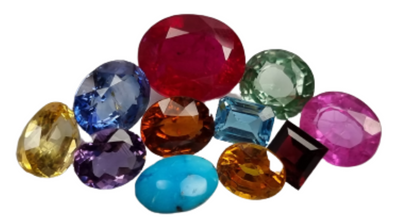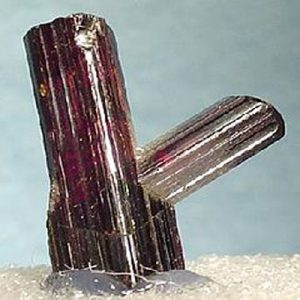Rutile: Gemstone Information
Rutile is a mineral composed primarily of titanium dioxide (TiO2). It’s one of the three most common forms of titanium dioxide found in nature, alongside anatase and brookite. Rutile is distinguished by its deep red to brownish-red coloration, which gives it its name, derived from the Latin word “rutilus,” meaning red.
Here’s a detailed exploration of rutile, covering its properties, uses, and benefits:
Chemical Composition: Rutile is primarily composed of titanium dioxide, often with trace amounts of iron, tantalum, niobium, vanadium, and other elements.
Crystal Structure: Rutile crystallizes in a tetragonal system, forming prismatic crystals.
Color: Its color can vary from golden yellow to deep red or brownish-red, depending on the presence of impurities.
Pigment Production: Rutile is a crucial ingredient in producing white pigment for paints, plastics, papers, and other materials. Its high refractive index and excellent light-scattering properties make it valuable in achieving bright, opaque whites.
Ceramics: In the ceramic industry, rutile is used as a glaze to provide a glossy finish and enhance durability.
Electrodes: Due to its high resistance to corrosion, rutile is used in the production of welding electrodes.
Optics: Rutile crystals are used in optics, especially in high-quality lenses and prisms, due to their high refractive index.
Gemstones: Occasionally, rutile forms needle-like inclusions within other minerals, such as quartz, creating attractive gemstones known as “rutile quartz” or “rutilated quartz.”
Chemical Industry: Rutile serves as a catalyst in various chemical processes, including the production of sulfuric acid and ammonia.
Benefits of Rutile:
High Opacity: Rutile’s exceptional light-scattering properties make it an ideal pigment for achieving high opacity in paints, plastics, and papers. This opacity enhances the brightness and coverage of these materials.
UV Resistance: Titanium dioxide, the primary component of rutile, offers excellent UV resistance, making rutile-based paints and coatings suitable for outdoor applications, where prolonged exposure to sunlight could otherwise cause degradation or discoloration.
Chemical Stability: Rutile is highly resistant to chemical corrosion, which makes it valuable in various industrial applications where durability is essential, such as in the production of ceramics and welding electrodes.
Optical Clarity: In optics, rutile’s high refractive index contributes to superior optical clarity, allowing for the production of lenses and prisms with minimal distortion.
Catalytic Activity: Rutile’s catalytic properties find utility in industrial processes, where it facilitates reactions necessary for the production of important chemicals like sulfuric acid and ammonia.
Aesthetic Appeal: In the world of gemstones, rutile inclusions within quartz crystals create visually striking patterns, adding value and aesthetic appeal to jewelry pieces.
Environmental Considerations: While rutile itself is not considered harmful to the environment, the process of mining and refining titanium dioxide can have environmental impacts, including habitat destruction and pollution. However, efforts are being made in many mining operations to minimize these impacts through sustainable practices and technological advancements.
In conclusion, rutile is a versatile mineral with a wide range of applications, from providing opacity in paints to enhancing optical clarity in lenses. Its benefits include high opacity, UV resistance, chemical stability, and catalytic activity, among others. However, it’s important to consider environmental implications associated with its extraction and processing.





